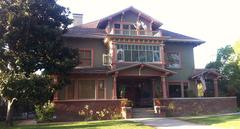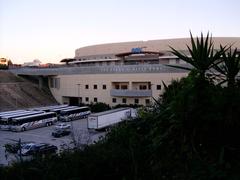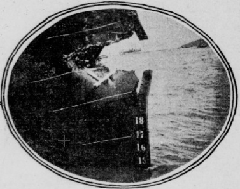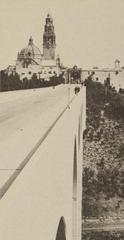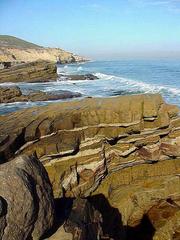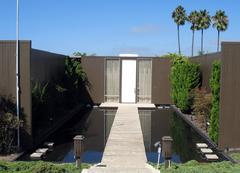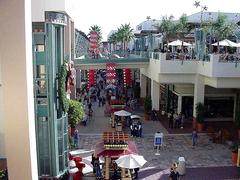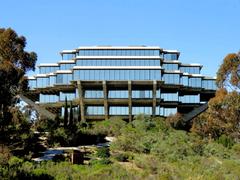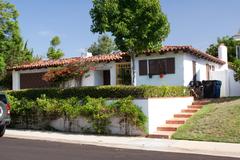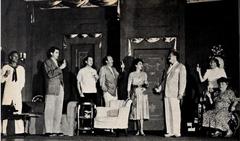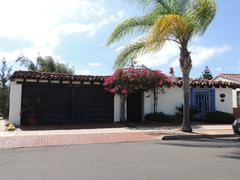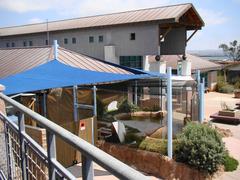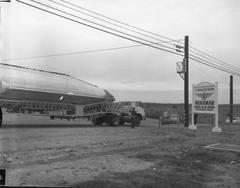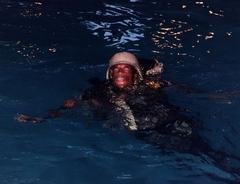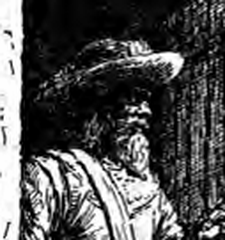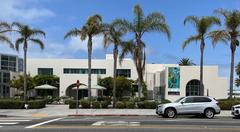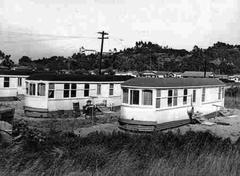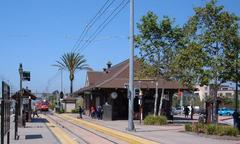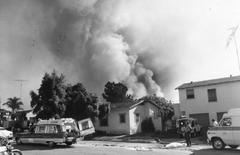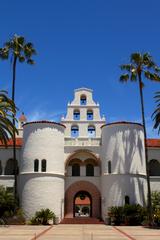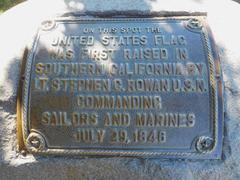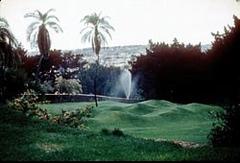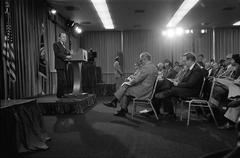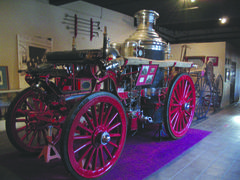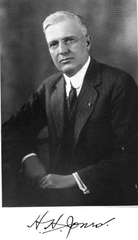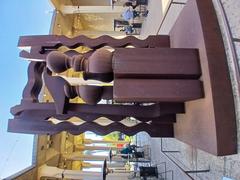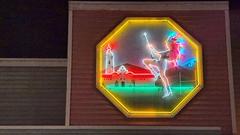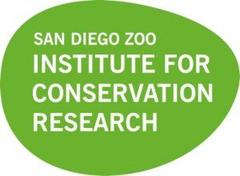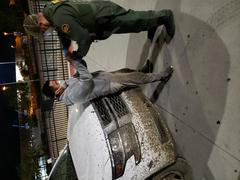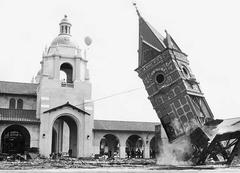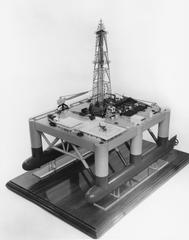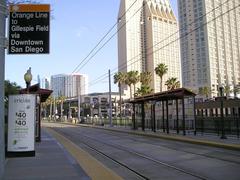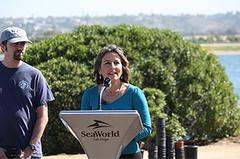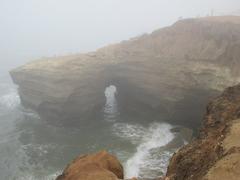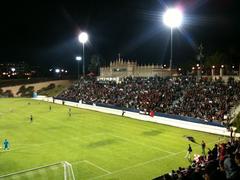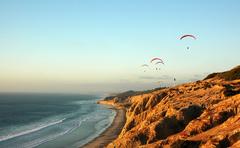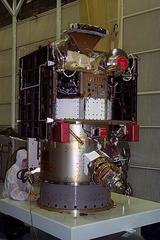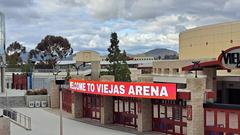Johnson-Taylor Ranch Headquarters Visiting Hours, Tickets, and Historical Sites Guide – San Diego
Date: 14/06/2025
Introduction: Discovering the Johnson-Taylor Ranch Headquarters
The Johnson-Taylor Ranch Headquarters, nestled within the scenic Los Peñasquitos Canyon Preserve in San Diego, California, is a living testament to Southern California’s rich and layered history. As one of the region’s oldest adobe ranch houses and a site of continuous human occupation for over 6,000 years, it offers visitors a rare opportunity to experience the intersection of indigenous Kumeyaay heritage, Spanish and Mexican ranching traditions, and American agricultural development. Today, the ranch serves as an accessible, family-friendly destination for history buffs, outdoor enthusiasts, and anyone seeking to connect with San Diego’s multicultural past.
This comprehensive guide details the Johnson-Taylor Ranch Headquarters visiting hours, ticket information, historical highlights, and practical tips to plan your visit. Whether you’re drawn by the adobe architecture, immersive educational programs, or the natural beauty of Peñasquitos Canyon, this landmark is a must-see among San Diego historical sites (San Diego History & Heritage, SOHO San Diego).
Table of Contents
- Introduction
- Early History and Indigenous Roots
- Spanish and Mexican Periods
- American Era and Ranch Development
- The Johnson and Taylor Families
- Architectural Features and Preservation
- Role in San Diego’s Regional Development
- Visitor Information
- Education and Interpretation
- Events and Community Engagement
- Frequently Asked Questions (FAQ)
- Conclusion
- References
Early History and Indigenous Roots
Long before the arrival of Europeans, the land now known as Los Peñasquitos Canyon was part of the ancestral territory of the Kumeyaay people. Archaeological evidence—including grinding stones, pottery fragments, and ancient trails—reveals that the Kumeyaay and their predecessors, the La Jolla culture, utilized the canyon’s abundant natural resources for thousands of years. The Kumeyaay established seasonal villages, practiced sustainable land management, and maintained a spiritual connection to the landscape that endures today (City of San Diego).
Spanish and Mexican Periods
The late 18th and early 19th centuries brought profound change with the arrival of Spanish explorers and missionaries. The establishment of Mission San Diego de Alcalá in 1769 marked the onset of Spanish colonization, which introduced cattle ranching and agriculture to the area. In 1823, the Mexican government granted Rancho de los Peñasquitos—the first Mexican land grant in California—to Captain Francisco María Ruiz. The original Ruiz-Alvarado Adobe, constructed in 1815, is among San Diego’s oldest surviving structures (City of San Diego).
The rancho system shaped the region’s economy and society, with large tracts used for cattle grazing and agriculture. The Lopez family, for instance, managed livestock in the area for generations, embedding the ranch in California’s rural heritage.
American Era and Ranch Development
Following the Mexican-American War, California became part of the United States, and the rancho lands changed hands several times. Around 1860, the Johnson-Taylor Adobe was built near a vital artesian well, serving as the headquarters for ranch operations. This adobe complex, notable for its traditional construction and elaborate design, became a focal point for agricultural activity and later additions by the Mohnike family in 1910 further expanded the site’s architectural diversity (City of San Diego).
The Johnson and Taylor Families
Named after the influential Johnson and Taylor families, the ranch headquarters reflects their pivotal roles in developing and preserving the site. The Johnsons expanded ranch operations in the late 1800s, while the Taylors, in the early 20th century, modernized infrastructure and maintained the ranch’s historic character. Their stewardship safeguarded the headquarters as the surrounding area underwent urbanization, ensuring its survival as a community landmark (San Diego Historic Designations).
Architectural Features and Preservation
The Johnson-Taylor Ranch Headquarters exemplifies Southern California adobe architecture:
- Main Adobe House: Thick earthen walls, wide verandas, hand-hewn beams, and period furnishings offer insight into 19th-century ranch life.
- Outbuildings: Barns, corrals, and storage sheds illustrate ranch operations; many contain original tools and equipment.
- Landscape: Mature trees, native plantings, and remnants of early irrigation highlight historical land-use practices.
Preservation efforts, led by public and private organizations, have stabilized structures, improved visitor access, and enhanced interpretive programming. The site’s inclusion on the National Register of Historic Places ensures its continued protection (PCAD).
Role in San Diego’s Regional Development
Throughout the 19th and 20th centuries, the ranch headquarters served as a hub for agricultural production, community gatherings, and employment. Its preservation during the 1960s and 1970s, amid pressures from urban expansion, became a catalyst for the creation of Los Peñasquitos Canyon Preserve—now one of San Diego’s largest open spaces (City of San Diego).
Visitor Information
Visiting Hours
- Preserve: Open daily, sunrise to sunset (typically 7:00 AM – 7:00 PM).
- Johnson-Taylor Adobe: Guided tours offered weekends, 10:00 AM – 3:00 PM.
Tickets and Admission
- Admission: Free; no tickets required. Donations are appreciated to support preservation and educational programs.
Tours and Programs
- Guided Tours: Docents offer weekend tours with in-depth history and access to interior rooms.
- Living History Programs: Seasonal events and reenactments provide a hands-on experience of ranch life.
- Educational Programs: School and group visits can be arranged in advance.
Accessibility
- Facilities: Main pathways and some outdoor areas are wheelchair accessible; some parts of the adobe may have limited access due to historic features.
- Assistance: Contact the City of San Diego Park and Recreation Department for specific accessibility needs.
Getting There
- Location: 12020 Black Mountain Road, San Diego, CA (Los Peñasquitos Canyon Preserve main entrance)
- Parking: Available on-site; spaces fill quickly on weekends.
- Public Transit: Limited; driving is recommended.
Nearby Attractions
- San Diego Botanic Garden
- Lake Poway
- Old Poway Park
- Peñasquitos Canyon hiking and biking trails
Education and Interpretation
Interpretive signage, historical exhibits, and guided tours connect visitors to the ranch’s multicultural heritage. The site highlights:
- Kumeyaay and Indigenous History
- Spanish and Mexican Ranching Practices
- Californio and American Settlement
- Traditional Adobe Architecture
Educational programs for school groups and families foster deeper appreciation of San Diego’s evolving landscape and communities (San Diego Heritage).
Events and Community Engagement
The ranch headquarters regularly hosts:
- Living history demonstrations
- Cultural festivals
- Historical reenactments
- Community volunteer opportunities
Check the SOHO San Diego website and City of San Diego for current event calendars.
Frequently Asked Questions (FAQ)
Q: What are the Johnson-Taylor Ranch Headquarters visiting hours?
A: The preserve is open daily sunrise to sunset; adobe tours are on weekends, 10:00 AM – 3:00 PM.
Q: Is there an admission fee or do I need tickets?
A: No—admission is free; donations are appreciated.
Q: Are guided tours available?
A: Yes, on weekends. Private group tours can be arranged in advance.
Q: Is the site accessible for visitors with disabilities?
A: Main paths are accessible; some adobe areas may be limited.
Q: Can I bring my pet?
A: Pets are allowed on leashes in the preserve but not inside the adobe.
Q: Are there food and restrooms available?
A: Restrooms are near parking; no food vendors, so bring your own water and snacks.
Q: Where can I park?
A: Park at the preserve’s main entrance; arrive early on weekends.
Conclusion
The Johnson-Taylor Ranch Headquarters is a cornerstone of San Diego’s historical and cultural identity. Its adobe buildings, layered histories, and natural setting offer a multidimensional experience for visitors of all ages. With free admission, engaging tours, and a range of educational and recreational opportunities, the site is an accessible gateway to understanding Southern California’s past. Enhance your visit by downloading the Audiala app for guided tours and event notifications, and join the ongoing conversation about heritage and preservation in San Diego.
Visual Media


Interactive map available at the official preserve website.
Internal Links
References
- San Diego History & Heritage
- SOHO San Diego
- City of San Diego Park and Recreation
- PCAD, Pacific Coast Architecture Database
- Obrag, San Diego City and County Historic Designations

